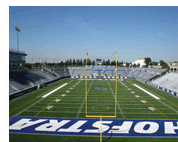My Longtime Baseball Friend Is Signing Off
For many years, I have been watching baseball with a friend. He’s become a close friend. He does most of the talking and I only see him occasionally. He doesn’t know me but I enjoy listening to him talk about baseball and life.
When this baseball season ends, Vin Scully will turn off his microphone. He has called the game for 65-plus years, first in Brooklyn and then with the Los Angeles Dodgers. I will miss him.
While never missing a play, Vin effortlessly worked into the conversations all those statistics for which baseball is known. He also shared with me the stories about the game of long ago and vignettes about the players of today that I did not hear anywhere else. He even shared with me his assumptions about the random thoughts running through the minds of managers. All this baseball was just for me – because I felt he was talking just to me — plus a little bit of history, philosophy, theology and commentary about life to put it all in perspective.
Vin is a New Yorker, though he has been in California since the Dodgers moved there for the 1958 season. He was born in The Bronx and raised in the Washington Heights section of northern Manhattan. Vin is a religious man. Brought up in an Irish Catholic family, he attended Fordham Prep and Fordham University with its Jesuit influences.
While at college, he was a student broadcaster on WFUV-FM, the school’s radio station that up until about 30 years ago predominantly was student-run. The roll call from its studios include names of entertainers, broadcasters and journalists you easily will recognize. The names span the pre-Vin years to his contemporaries to those who have followed. Hundreds of others have walked the same halls at Fordham and sat behind its radio microphone but those names will not be known to you. Be assured that they, too, have gone onto highly successful careers.
Vin learned valuable lessons at that station and when he worked with Red Barber on Brooklyn Dodgers broadcasts. Be yourself, Barber told him, because there is no one else like you. He also learned to allow the roar of the crowd to help him tell a story.
As he comes to his ninth inning and eventual postgame, I wonder how Vin plans to close out the game. Will he be philosophical? Possibly poetic? Maybe historical? Or will it be a simple “See you around the ballpark!”
Whatever he decides, he has had a fantastic life in and out of baseball. He has touched—and called—them all!









